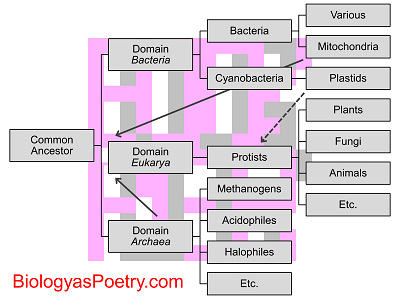∞ generated and posted on 2016.08.30 ∞
Graphic description of the genetic relatedness of all cellular life forms.
The universal tree is usually based on comparative small-subunit ribosomal RNA. These sequences naturally "clump" into three basic sequence categories, corresponding (more or less by definition) to domains Eukarya, Bacteria, and Archaea.

Figure legend: A perspective on the rooted universal tree. Note the absence of a direct connection between domain Eukarya and the common ancestor to cellular organisms. Instead the eukaryotes are thought to have originated as a consequence of an endosymbiotic event between a member of domain Bacteria and a member of domain Archaea, that is, the endosymbiotic event that gave rise to the mitochondria.
The resulting phylogenetic descriptions can be rooted or not rooted. A root traces the genetic relationships back to a common ancestor, known as LUCA (for last universal cellular ancestor). An unrooted tree, by contrast, considers only measured genetic similarity without consideration of where that genetic similarity came from.